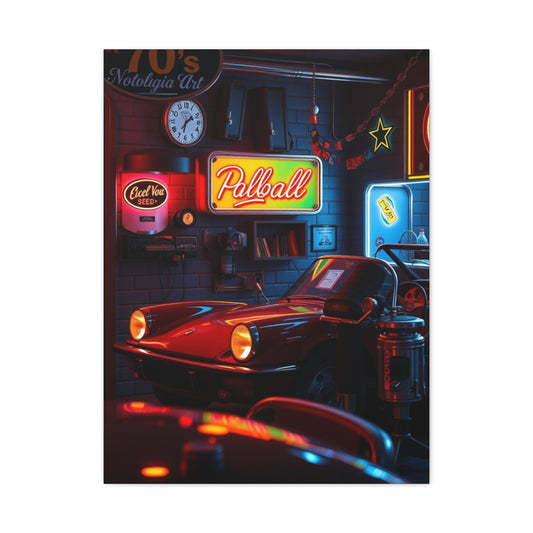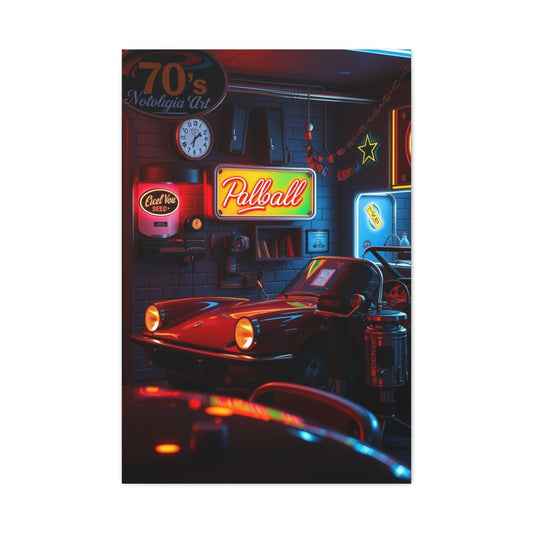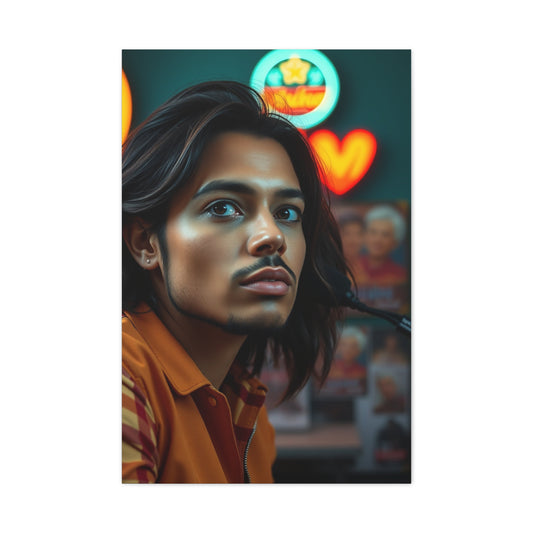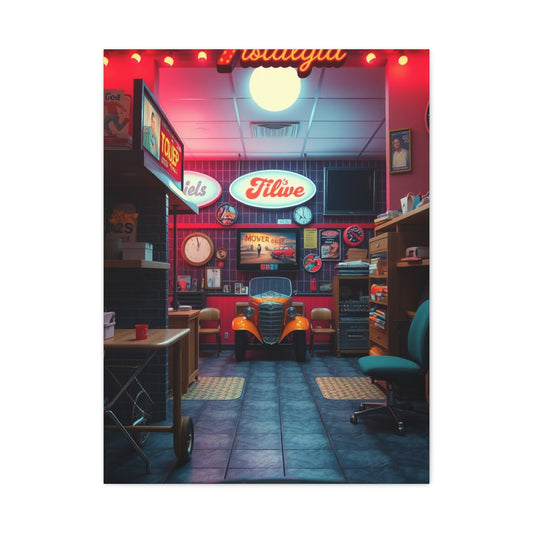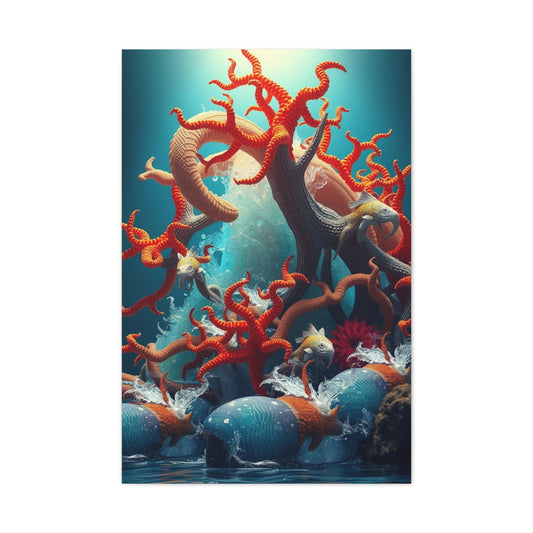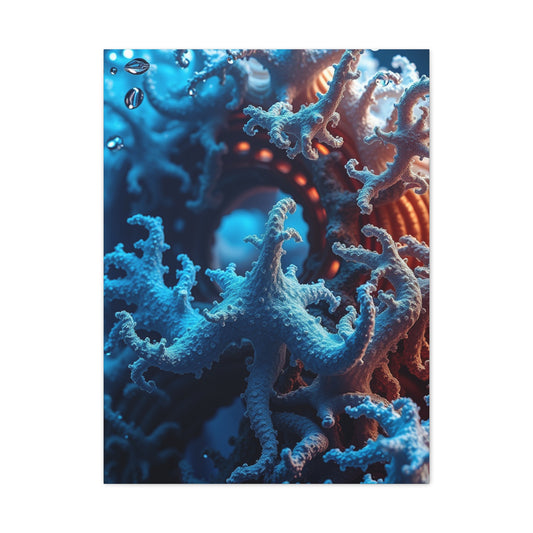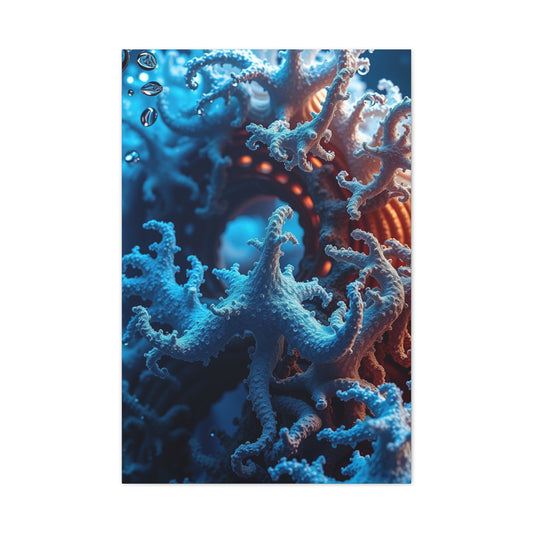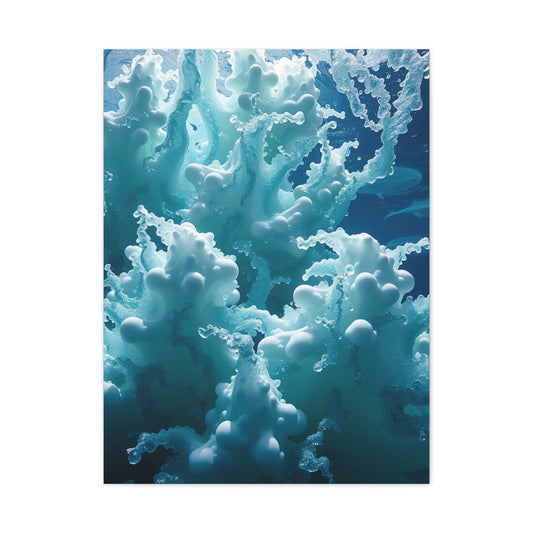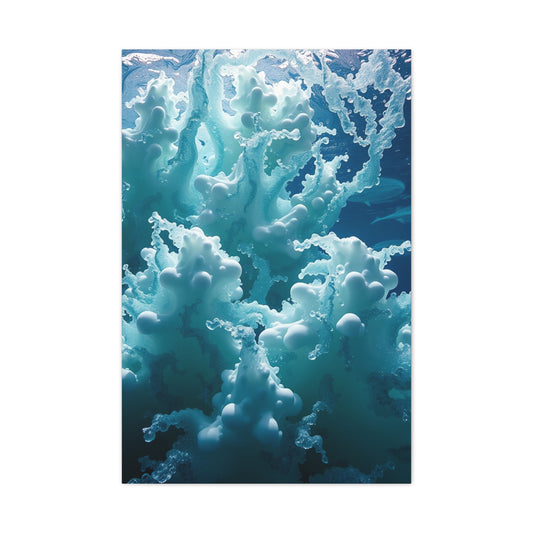Capturing the irresistible charm of a kitten may appear simple, but as any seasoned feline enthusiast will attest, photographing these energetic bundles of fluff is both delightful and demanding. With their sudden bursts of speed, unpredictable behavior, and delicate features, kittens offer unique opportunities for enchanting images—but only if you're prepared to meet them with the right mindset and technical approach.
Whether you’re using a DSLR, mirrorless camera, or even a high-quality smartphone, the fundamentals of kitten photography remain the same: anticipate the action, understand your subject, and adapt to their ever-changing moods. Below, we delve into nine advanced techniques to help you master kitten portraiture and produce heartwarming images worth sharing and cherishing.
Understanding Kitten Behavior: The Art of Timing and Observation
Photographing kittens isn't just about pointing and shooting. These tiny creatures, still exploring the world around them, move with a mix of curiosity, speed, and skittishness. Unlike obedient dogs, kittens don’t respond well to commands or posing, making candid photography your best approach.
To maximize your success, spend a few minutes observing the kitten before you begin. Watch how it plays, which areas it gravitates toward, and what toys or textures attract it most. By understanding their natural rhythm, you can anticipate those precious seconds when the kitten pauses long enough to be photographed—whether it's staring out a window or pausing mid-pounce.
|
Related Catagories: |
Have your camera settings ready ahead of time. Kittens won’t wait while you adjust ISO or fumble with focus. Keep your gear prepped and accessible, as the best moments often appear in the blink of an eye.
Stimulate Curiosity: Tools for Capturing Their Gaze
Capturing the perfect portrait of a kitten isn’t just a matter of pointing a camera and hoping for the best. Felines are naturally inquisitive but can also be easily distracted or startled. To truly draw a kitten’s gaze toward your lens and hold it long enough to immortalize the moment, you need to think like a cat—deeply attuned to the subtle stimuli that engage their senses.
Kitten photography is an art form that thrives on spontaneity, patience, and an understanding of feline psychology. Whether you're photographing rescue kittens for adoption profiles or creating professional pet portraits, the techniques you use to gain their attention can make or break your session. Below is a comprehensive guide on how to engage their senses through sound, scent, and motion to help you capture photos that radiate charm and personality.
Understand the Feline Mindset
Kittens experience the world primarily through heightened senses—keen hearing, acute vision attuned to movement, and an olfactory system that can detect the faintest aroma. Their prey-driven instincts make them highly responsive to certain stimuli. Before initiating a photography session, observe the kitten in its natural state. Does it perk up at jingling keys? Is it mesmerized by ceiling light reflections? Paying attention to these reactions can inform your strategy.
Sound: Subtle Auditory Cues That Spark Curiosity
When working with kittens, gentle auditory prompts can be a game changer. Rather than using loud or abrupt sounds—which may scare them—opt for soft, crisp noises that mirror the rustling of leaves or the scurrying of a tiny critter.
Crinkled paper is a reliable tool. Its light crackling mimics the rustle of dry foliage, often triggering a kitten's hunting instinct. You can subtly crinkle it behind or beside the camera lens to direct their gaze without startling them. Small bells, especially ones attached to cat toys, can also attract attention when jingled softly. The sound is familiar to most kittens and often associated with playtime.
Tapping lightly on surfaces such as wood, glass, or even your lens casing can produce curious, hollow sounds that intrigue young felines. The key is unpredictability—varying your auditory prompts keeps the kitten engaged and prevents them from becoming desensitized to any one stimulus.
Scent: Aromatic Lures for a Focused Gaze
Scent-based stimuli tap into a kitten’s primal instincts. Their sense of smell is a cornerstone of their understanding of the world, and certain familiar or intriguing scents can lock their attention in a heartbeat.
To utilize this, consider rubbing a favorite toy or well-loved blanket near the lens. Not only does this draw their gaze, but it also evokes a sense of comfort and safety, helping them stay relaxed during the shoot. Alternatively, try lightly dabbing the area around the camera with catnip oil or valerian—aromas many cats find irresistible.
You can even create a makeshift “scent diffuser” by placing a treat or a sachet of dried herbs in a mesh pouch tied near your lens. This maintains the aromatic draw without overwhelming the kitten's senses. It’s essential, however, to avoid overusing potent smells or introducing unfamiliar fragrances that may cause aversion or distress.
Motion: Visual Stimulation Through Movement
Few things captivate a kitten more effectively than motion. Quick, fluttering movements mimic the behavior of prey, naturally commanding a feline’s visual focus. To exploit this, use a feather wand or a simple string toy held just above or beside the camera.
The goal is to animate these tools in a way that feels spontaneous and erratic—sudden twitches or darting swoops that ignite their instinctual curiosity. Avoid rhythmic or repetitive motions, which can quickly become boring to an alert and intelligent kitten. Vary your technique: a sudden flick to one side, then a pause, then a slow approach toward the lens. This creates suspense and anticipation, key ingredients in holding a kitten’s gaze.
Another underrated method involves light reflections. Using a small mirror or a reflective surface, bounce ambient light onto nearby walls or surfaces. Many kittens find the dancing shimmer of reflected light fascinating, often freezing in place to follow it with their eyes—offering the perfect still moment for a photograph.
Creating a Safe and Serene Environment
No amount of sensory prompts will help if the kitten feels unsafe or overstimulated. Before you begin the session, ensure the space is quiet, warm, and free of disruptive noises. Lay out a soft blanket or place the kitten in a cozy nook where they feel secure.
Limit the number of people present and keep sudden movements to a minimum. If you're using props or tools, introduce them gradually. A frightened kitten will retreat from your efforts; a calm kitten will engage naturally.
Using ambient or diffused lighting rather than flash can also help maintain a peaceful atmosphere. Harsh lights often startle young animals and may ruin an otherwise perfect moment. Natural light from a window, complemented by a gentle reflector, can produce stunning results while preserving the kitten’s comfort.
Experiment and Observe
Not all kittens are the same. While one may leap into the air at the sound of a squeaky toy, another might be completely disinterested. Some kittens prefer tactile stimulation, like the soft brush of fur against their whiskers, while others are visually motivated. That’s why it's vital to experiment with various tools and watch closely how each kitten responds.
Does a particular kitten tilt its head when you whisper? Does it become entranced by the gentle sway of a pendant necklace? Every reaction is a clue, and the more attuned you are to their responses, the more successful your photos will be.
Document your findings over time. If you're photographing multiple kittens for a shelter or breeder, keep notes on what worked best for each subject. This not only improves your own technique but builds a repertoire of effective tricks you can use in future sessions.
Timing Is Everything
A kitten's mood and energy level can fluctuate throughout the day. The best time to photograph is often after a light nap or a short burst of play—when they're alert but not overly hyper. Avoid scheduling shoots when they're hungry, tired, or overwhelmed. A well-timed session ensures they are more receptive to stimuli and less likely to retreat or become agitated.
Patience is the unsung hero of pet photography. Sometimes it takes several minutes—or even longer—to capture the perfect shot. Stay calm, let the kitten explore, and use your sensory tools gradually. When that golden moment arrives—a direct, wide-eyed gaze into the lens—it will be well worth the wait.
Unlocking Gaze Through Sensory Engagement
Capturing a kitten’s gaze in photography isn’t about coercion or control; it’s about understanding, empathy, and creative engagement. By leveraging subtle sounds, inviting scents, and evocative movements, you create an interactive experience that feels natural to the kitten and satisfying for you as the photographer.
Each tool you use should serve as an invitation, not a demand. With a little patience and the right sensory techniques, you’ll not only grab their attention—you’ll capture a moment of genuine feline wonder that tells a story without words.
Embrace the Unpredictable: Patience Is Your Greatest Asset
Photographing kittens is a delightful, chaotic, and often unpredictable experience. While many aspire to capture the perfect portrait of a wide-eyed feline gazing into the lens, the reality often veers far from that ideal. Kittens, with their boundless energy and mercurial moods, are some of the most challenging yet rewarding subjects in pet photography. More than technical skill or state-of-the-art equipment, your greatest asset in these sessions is patience.
To truly succeed in photographing these tiny enigmas, you must surrender to the moment, accepting that control is an illusion when it comes to animals still discovering the world around them. Rather than directing every pose, allow spontaneity to shape the narrative. The most memorable images often emerge when you least expect them—when the kitten believes it’s unobserved or is too engrossed in play to notice your lens hovering nearby.
Understanding the Nature of Kittens
Kittens are curious, impulsive, and sensitive to stimuli. Unlike adult cats who may have settled into predictable routines, young felines are still learning what excites or frightens them. A rustle in the leaves might send them leaping into the air; a shaft of light might freeze them in their tracks with wide-eyed fascination. Each reaction is unfiltered, raw, and photogenic—if you're prepared to catch it.
Before you begin a photo session, take a moment to connect with your subject. Let the kitten roam freely through the environment. Allow it to sniff, climb, paw at shadows, and interact with its surroundings. By doing so, you give it the time and space to feel safe, reducing the likelihood of stress or overstimulation.
Photography at this stage should be about observation rather than orchestration. Stay present. Stay quiet. Let your camera follow the kitten's lead.
The Art of Non-Intervention
One of the most common mistakes in pet photography is trying to force a pose. Attempting to hold a kitten in place or repeatedly repositioning it can quickly lead to frustration—for both the photographer and the animal. Kittens, being inherently independent, respond poorly to imposed structure. What begins as a calm session can quickly devolve into restlessness if the kitten feels controlled or restrained.
Instead, embrace the ebb and flow of natural behavior. Whether it’s a clumsy tumble off a cushion or an awkward pounce at a flickering shadow, these candid moments are visual gold. They convey the authenticity of kittenhood in ways no posed portrait can. Aim to capture movement, curiosity, and fleeting gestures. A mid-yawn, a sleepy stretch, a startled expression—these are the unscripted moments that elevate your photography from generic to genuine.
Let the kitten set the tempo. If it wants to nap, let it nap. If it starts chasing its tail or exploring under furniture, be ready to adapt. You are not directing a model; you are documenting a living, breathing story as it unfolds.
Timing Is Crucial
When photographing young animals, timing is everything. Kittens operate on erratic energy cycles—short bursts of intense play followed by sudden crashes into deep slumber. Scheduling your session to align with these natural rhythms can dramatically improve your results.
Try starting shortly after a kitten has woken from a nap. At this stage, they are alert but not overactive. You’ll find they often exhibit a mix of curious stillness and soft movement—ideal for capturing expressive images without motion blur.
Avoid photographing during periods of overstimulation. If the kitten is too excited, it will be difficult to focus its attention or maintain a consistent rhythm. Likewise, avoid trying to wake a sleeping kitten. Drowsy behavior can be adorable, but forced interaction in these states usually leads to images that lack the spark of authenticity.
Creating a Calming Atmosphere
Environmental control can support a more productive shoot. The setting should feel cozy, familiar, and inviting to the kitten. Use soft surfaces, gentle lighting, and keep background noise to a minimum. Avoid bright flashes or sudden movements that might trigger defensive responses.
If the shoot takes place in a new or unfamiliar location, give the kitten ample time to acclimate. Set up a small staging area with familiar objects—perhaps a blanket from home or a favorite plush toy. These comfort cues help reduce anxiety and promote natural behavior.
Position yourself at eye level with the kitten whenever possible. This low-angle perspective not only yields more intimate portraits but also places you in a non-threatening posture. Remember: to the kitten, you're a towering figure wielding a strange clicking device. The more you blend into their world, the better your chances of capturing unguarded moments.
|
Related Catagories: |
Anticipate Rather Than React
When photographing any animal—especially one as erratic as a kitten—reaction time is key. But beyond reflexes, anticipation is what separates a good image from a great one. Observe the kitten's body language: a tail flick may signal an impending pounce; perked ears might precede a sudden look toward a noise. Learn to read these cues, and you'll start to predict behaviors just seconds before they unfold.
This proactive mindset ensures your shutter is ready before the moment arrives, rather than scrambling to catch it after it's already passed. Use continuous shooting mode or burst mode if available—this way, even a blink-of-an-eye action can yield multiple usable frames.
Capturing Emotional Texture
The beauty of kitten photography lies in its emotional resonance. These tiny creatures embody vulnerability, playfulness, and wonder in every twitch and glance. Focus not only on the aesthetics but on emotional texture—the unspoken mood of each frame.
Look for those subtle expressions: the half-closed eyes of sleep, the intent gaze of curiosity, or the fleeting bewilderment when encountering something new. These glimpses into the kitten’s inner world transform simple snapshots into storytelling images.
Allow yourself to be moved by these moments. The best pet photography stems from a place of empathy, not just artistry. When your subject feels safe and your presence is calm, that emotional exchange translates directly through the lens.
Let Go of Perfection
Perfection in kitten photography is a myth. You’ll encounter blurred shots, unexpected exits from the frame, and expressions that defy logic. But these imperfections often hold more charm than any meticulously staged composition.
Lean into the chaos. Allow the session to be playful, fluid, and imperfect. If you capture one or two images that convey the kitten’s spirit, you've succeeded. And sometimes, the image that initially seems unusable—a tongue mid-lick or a paw blocking half the face—turns out to be the most endearing of the bunch.
Let the process be as whimsical as your subject. Kitten photography, at its core, is about preserving the fleeting innocence of youth and the joyful unpredictability of life in miniature.
Precision in Focus: Target the Eyes for Emotional Impact
In the realm of kitten photography, few elements possess the magnetic pull of a feline's eyes. They reflect innocence, curiosity, and a sense of quiet mystery that captivates anyone who views the image. Whether glimmering with youthful mischief or softened by the haze of sleep, a kitten’s eyes often serve as the emotional nucleus of a portrait. Achieving razor-sharp focus on them isn’t merely a technical suggestion—it is the keystone of impactful visual storytelling.
The art of photographing animals, particularly kittens, involves capturing fleeting expressions and movements that vanish in an instant. And amidst the flurry of tiny paws, flicking tails, and twitching ears, the eyes remain a constant focal point of emotional connection. A perfectly focused gaze can transform an otherwise simple snapshot into an image brimming with soul.
Why Eye Contact Is Crucial in Kitten Photography
Eyes carry weight in visual narratives. In human portraiture, connecting with the subject’s gaze often draws viewers into the story. The same is true—perhaps even more intensely—with animals. A kitten's wide, shimmering eyes can convey wonder, timidity, or playful defiance. Ensuring those eyes are in tack-sharp focus lends the photograph both clarity and emotional gravitas.
In practical terms, when an image includes a depth of field that blurs the background or parts of the body, the eyes become the anchor. They guide the viewer’s focus and hold attention, even when the rest of the composition fades softly into artistic abstraction. An out-of-focus eye, by contrast, often leaves a viewer feeling disconnected from the subject, no matter how charming the pose or lighting may be.
Tools and Techniques to Nail the Focus
Achieving precise focus on such a small, dynamic subject is a challenge that tests both equipment and technique. Fortunately, modern digital cameras and mirrorless systems offer tools that make this task more manageable—even for beginners.
Start by selecting single-point autofocus. This mode allows you to manually choose a specific point in the frame—usually on one of the kitten’s eyes. For portraits where the kitten is angled slightly to one side, it's generally recommended to focus on the eye closest to the camera. This maintains a natural depth of field while preserving sharpness where it matters most.
For more energetic sessions where the kitten is in constant motion, switching to continuous autofocus—known as AI Servo (Canon) or AF-C (Nikon, Sony)—is ideal. This setting tracks the kitten as it moves, ensuring your focal point stays locked, even during bounding leaps or sudden turns.
If your camera is equipped with eye-detection autofocus, use it to your advantage. These intelligent systems can identify and follow the subject’s eyes automatically, giving you a higher chance of nailing focus in fast-paced scenarios. Eye-detection autofocus is especially useful in mirrorless systems, where real-time feedback and facial recognition algorithms can significantly improve your hit rate.
Shutter Speed and Aperture Considerations
Even with perfect focus tracking, motion blur can destroy a shot if your shutter speed is too slow. With kittens, it’s best to keep your shutter speed above 1/250, and ideally closer to 1/500 or higher during play. This ensures the rapid flick of a paw or a sudden head tilt doesn’t ruin the clarity of your subject's eyes.
When it comes to aperture, balancing depth of field is essential. A wider aperture like f/1.8 or f/2.8 will beautifully blur the background and emphasize the eyes, but it also reduces your margin for error. If the kitten moves even slightly, your focal plane can shift off target. Consider using f/4 or f/5.6 when possible to maintain enough depth of field for sharpness, while still isolating the subject from a busy backdrop.
RAW Format for Maximum Detail
Shooting in RAW format is highly recommended when working with kitten portraits. This uncompressed file type retains far more image data than JPEGs, allowing you to fine-tune sharpness, exposure, and clarity in post-production without degrading image quality.
With RAW, you can perform micro-adjustments to enhance the catchlight in the kitten’s eyes or gently sharpen areas that may be just shy of perfect. It also gives you greater flexibility to manage highlights, which is particularly useful when working with kittens with pale fur or light-colored irises that may otherwise appear washed out under natural light.
Lighting for Expressive Eyes
Eyes thrive on light—particularly catchlights, those subtle reflections that bring life to an image. A kitten’s eyes without catchlight can appear flat or dull, even when technically sharp. To avoid this, aim for diffused natural light, such as a window with sheer curtains. This produces gentle shadows and adds sparkle to the eyes without creating harsh glare.
Position the kitten so that light falls diagonally across its face, illuminating the irises and producing depth in the pupils. Reflectors or white foam boards can help bounce light into shadowed areas, particularly for darker-furred kittens whose features can disappear without proper illumination.
Avoid using direct flash. Not only can it startle the kitten, but it also risks producing red-eye effects or flattening the texture of the fur and face.
Exploring Creative Focus
While the eyes should be the primary focus in most kitten portraits, don't be afraid to explore alternative focal points for variety and artistic interpretation. Close-ups of paws kneading a blanket, a twitching ear backlit by morning light, or the arc of a tail curled in repose can all convey the kitten’s personality in different ways.
In these cases, use selective focus to create visual intrigue. A tight shot of a kitten’s paw with soft blur fading into the background fur can be surprisingly evocative. These detailed studies add visual rhythm to a photo series and offer viewers a deeper appreciation for the subtle beauty of feline features.
Depth of Field and Composition
Managing depth of field is a powerful way to isolate the eyes in a visually compelling composition. Using a shallow depth of field helps minimize distracting background elements, keeping the viewer’s attention firmly on the subject. In cramped indoor settings or shelters where backgrounds may be cluttered, this technique is especially valuable.
Consider using the rule of thirds to place the kitten's eyes off-center, allowing for more dynamic and balanced compositions. Align one eye with a point of interest on the grid to draw the viewer in naturally.
In situations where both eyes aren’t visible or one is partially obscured, compose the image to emphasize symmetry or intentional asymmetry. Visual harmony can often be achieved even in irregular frames if the focus and lighting are well-balanced.
Practicing Intentional Patience
Photographing a kitten’s eyes requires both technical mastery and a patient mindset. Be prepared to take dozens—or even hundreds—of frames to get one image that truly sings. Focus, especially at shallow apertures, can easily slip. The kitten might blink, move, or turn away just as you press the shutter.
Instead of rushing, treat each session as an opportunity to slow down and observe. Wait for those in-between moments when the kitten gazes outward with an expression of wonder or fatigue. Precision in focus is rarely about speed—it’s about intent.
Leverage Burst Mode to Capture Fleeting Expressions
Because kittens shift from stillness to action in a heartbeat, burst or continuous shooting mode can be your best ally. This mode allows you to fire off a series of photos in rapid succession, increasing the likelihood of capturing a perfect moment mid-pounce, mid-blink, or mid-meow.
Be sure your memory card has ample capacity and a fast write speed. Burst mode creates a large number of files quickly, so high-speed SD cards help prevent lag. During editing, curate your images carefully, selecting the frames with the best expressions or sharpest detail.
This technique is especially helpful when photographing kittens playing with toys or interacting with other animals or people.
Select the Ideal Camera Settings for Each Scenario
Photographing kittens is a dynamic and rewarding experience, but it also presents unique technical challenges that call for versatility and adaptability. Mastering camera settings is essential for producing professional-quality images that reflect the charm, curiosity, and subtle beauty of your feline subject. Whether you’re aiming for a softly blurred portrait or a sharply defined action shot, choosing the appropriate shooting mode and adjusting the exposure triangle—aperture, shutter speed, and ISO—can make the difference between an average image and a captivating one.
Understanding how and when to use your camera’s various modes not only enhances image quality but also streamlines your workflow, giving you more room to focus on timing, composition, and emotional expression.
Aperture Priority Mode: For Soft, Storytelling Portraits
Aperture Priority Mode (often labeled as "A" or "Av" on your camera’s dial) is a favorite among pet photographers for a good reason. It allows you to control the aperture, which directly affects your depth of field, while the camera automatically adjusts the shutter speed to maintain proper exposure. This is particularly advantageous when working in shifting lighting environments or when trying to maintain a specific visual style across multiple images.
When photographing kittens, use lower f-stop values—such as f/2.8, f/3.5, or f/4—to create a shallow depth of field. This technique elegantly blurs the background, isolating the kitten’s delicate features and placing all attention on their expressive eyes or fur textures. The result is a dreamy, intimate portrait that draws the viewer in and feels emotionally rich.
This setting excels in well-lit indoor conditions or natural light environments where light is diffused and steady. Think of a kitten resting by a window, bathed in golden-hour sunbeams, with only its eyes or whiskers in razor-sharp focus while everything else melts into a buttery bokeh.
Aperture Priority Mode also ensures consistency in exposure while you move around your subject. If the kitten shifts position or the lighting changes slightly, your camera adapts the shutter speed accordingly, keeping your images properly exposed while you concentrate on composition and timing.
Shutter Priority Mode: For Motion and Playfulness
Kittens are bundles of motion—pouncing, darting, leaping, and chasing with boundless energy. When trying to capture these high-energy moments, Shutter Priority Mode (often marked as "S" or "Tv") becomes indispensable. In this mode, you choose the shutter speed, and the camera adjusts the aperture to maintain optimal exposure.
To freeze fast-moving subjects like a kitten mid-jump or during an intense play session, use shutter speeds of 1/250, 1/500, or even up to 1/1000 depending on the lighting conditions and movement intensity. These higher speeds stop motion in its tracks, producing images that feel crisp and full of kinetic energy.
Shutter Priority is particularly helpful in inconsistent lighting—like when a kitten moves in and out of shadows or darts through a sunbeam. It gives you the confidence to capture fleeting moments without worrying about blur from camera shake or subject movement.
If lighting is limited, increase your ISO slightly to compensate for the faster shutter speed. Most modern cameras handle ISO values between 800 and 1600 with minimal noise, especially when shooting in RAW format. You can also utilize lenses with larger apertures (like f/1.8 or f/2.8) to allow more light in, giving your camera more flexibility when adjusting the exposure.
Manual Mode: For Full Creative Command
Manual Mode ("M" on the dial) offers complete control over every element of exposure. While it may seem intimidating at first, this mode is ideal when you’re working in challenging lighting environments or want to experiment with creative techniques like backlighting or intentional underexposure.
In Manual Mode, you control shutter speed, aperture, and ISO simultaneously. This allows you to tailor your settings to the exact aesthetic and technical requirements of your shoot. For example, if you’re photographing a dark-furred kitten against a sunlit backdrop, you can reduce your exposure slightly to avoid blown highlights, then adjust shadows later in post-processing.
Manual Mode is especially beneficial for studio-style kitten photography where external lighting sources—such as continuous LED panels or softboxes—are used. In these scenarios, light levels are constant and controlled, giving you the freedom to fine-tune exposure for maximum detail and clarity.
It also encourages deeper engagement with the environment and your subject. You’ll learn how different lighting conditions influence exposure, how your lens performs at different apertures, and how to minimize noise by optimizing ISO. Over time, using Manual Mode fosters a more intuitive understanding of your gear and how to push its limits creatively.
A helpful tip when using Manual Mode is to slightly underexpose your image—particularly in high-contrast scenes. Doing so preserves highlight detail and gives you more flexibility in editing, especially when shooting in RAW.
ISO Settings: The Invisible Ally
ISO is the third element of the exposure triangle and plays a crucial supporting role in kitten photography. Lower ISO values (100–400) are preferred in bright environments, as they produce the cleanest images with the least digital noise. However, when shooting indoors or in dim conditions, increasing your ISO is often necessary.
Today’s mirrorless and DSLR cameras handle ISO 800 to 1600 quite gracefully, especially if your final images are destined for online use or small prints. For action shots or in situations where you need both fast shutter speeds and small apertures, don’t hesitate to push the ISO higher—ISO 3200 or even 6400 on modern cameras can still yield usable results with proper post-processing.
Keep in mind that a slightly noisy image can still be charming, but a blurry one—caused by slow shutter speeds or poor focus—is much harder to salvage.
White Balance and Metering Modes
Though often overlooked, white balance plays an important role in ensuring color accuracy—especially with kittens of unique fur tones, such as cream, grey, or calico. Use the “Cloudy” or “Shade” white balance settings when working with natural light, as they tend to warm up the tones beautifully. In controlled environments, custom white balance settings offer the most precision.
Metering modes also affect exposure accuracy. In scenes where the kitten is brightly lit against a darker background—or vice versa—spot metering allows you to expose for the subject rather than the entire frame. This ensures the kitten’s face or eyes are properly exposed, even if it throws the background into high contrast.
Auto Mode: A Beginner’s Starting Point (Use With Caution)
For beginners or those caught in unpredictable conditions, Auto Mode can act as a safety net. However, it often lacks the finesse and creative control needed for compelling kitten portraits. It may fire the flash unexpectedly, choose high apertures that reduce subject isolation, or underexpose dark fur in bright settings.
If you do resort to Auto Mode, monitor each shot closely and consider transitioning to semi-automatic modes like Aperture or Shutter Priority as you gain confidence.
Illuminate Softly: Working with Lighting in Feline Photography
Lighting plays a crucial role in any photography genre, but with kittens, it can also affect their behavior. Sudden flashes may startle them or cause discomfort, particularly in younger felines with sensitive vision.
Opt for natural window light whenever possible. Position your subject near a bright but diffused source—such as sheer curtains on a sunny day. If more light is needed, use soft, continuous sources like LED panels. These provide a steady illumination that mimics natural light and reduces anxiety.
Avoid harsh overhead lighting, as it can cast unwanted shadows or wash out the kitten's features. Instead, use bounce techniques—directing light off walls or reflectors—to envelop the kitten in gentle, even tones.
Experiment with Angles: Changing Your Point of View
One of the most effective ways to enhance the visual appeal of kitten portraits is by altering your perspective. Shooting from above can highlight a kitten's petite frame, while kneeling or lying flat at eye level brings a sense of intimacy and connection.
Try placing your camera on the floor or using a low tripod to match the kitten's eye line. From this vantage point, you can emphasize facial features, expressions, and interaction with their environment.
Alternatively, explore overhead shots for symmetrical compositions, especially if the kitten is curled up or playing with toys. Tilted angles and close crops can also add a playful or dramatic flair, depending on the desired aesthetic.
Add Depth and Variety Through Framing and Composition
Don’t rely solely on one framing style. Diversify your shots to create a well-rounded series.
Wide Shots: Incorporate the environment—whether it’s a cozy room, garden nook, or play area. This sets the scene and gives context to your kitten’s personality.
Mid-Range Shots: Focus more on the kitten while still including background elements. These work well for lifestyle-style images that show interaction with toys, other pets, or people.
Close-Ups: Highlight textures and features—fur, whiskers, and the glint in their eyes. Use a macro lens or zoom in for stunning detail.
Apply the rule of thirds to keep compositions dynamic. Use leading lines—like window frames, blankets, or shadows—to draw the viewer’s eye directly to the kitten.
Conclusion: Embrace the Whimsy and Wonder of Kitten Photography
Photographing kittens is an adventure filled with surprises, giggles, and a few outtakes. It’s a delightful exercise in patience, observation, and creativity. Each session is an opportunity to see the world through fresh, curious eyes.
Approach your kitten shoots with flexibility and openness. Use technical tools like burst mode, autofocus, and smart lighting, but don’t forget the heart of the image lies in its emotion. The tilt of a head, the curl of a paw, the glint of mischief—these are the details that bring your images to life.
By blending preparation with play, and technique with tenderness, you’ll not only capture cute kitten photos—you’ll create lasting visual memories full of warmth and joy.










